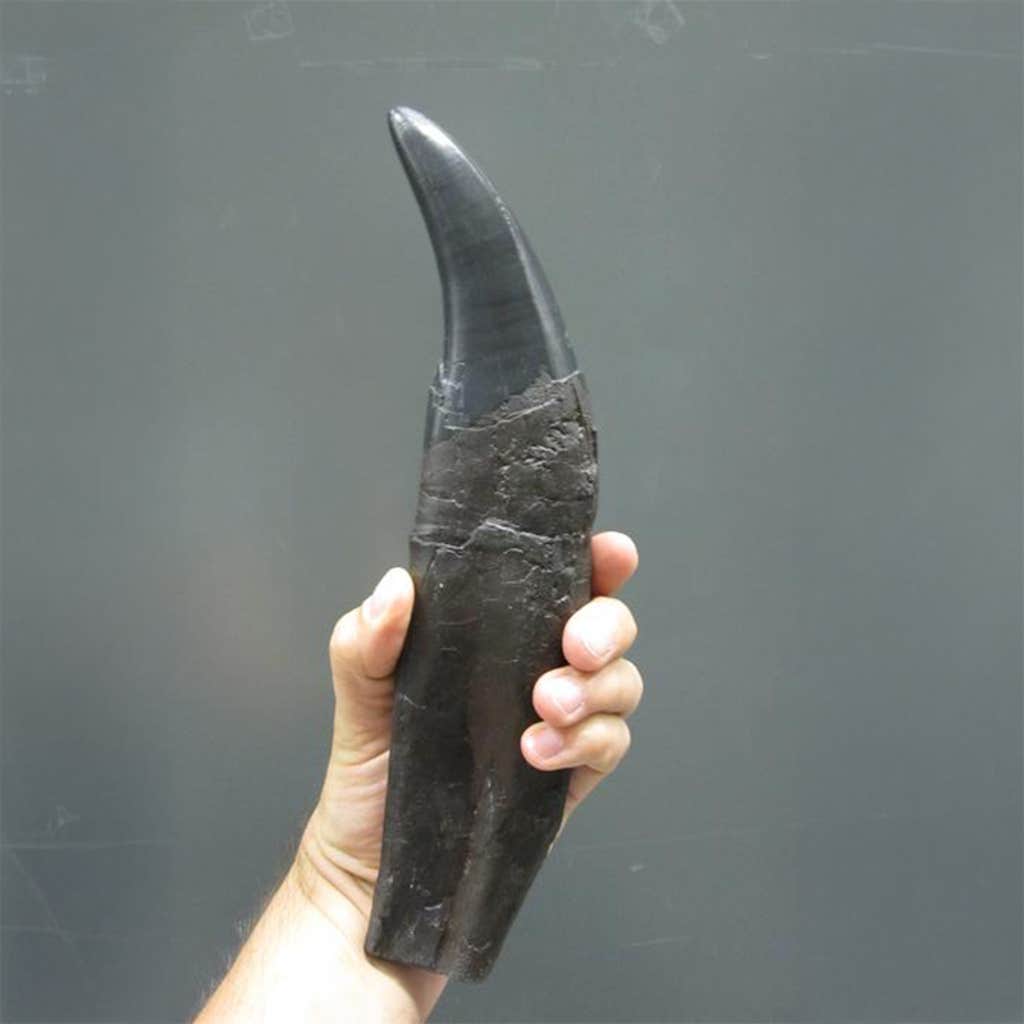In life, a T. rex’s teeth were fearsome. Arguably the majestic carnivore’s most valuable weapon. But 66 million years after the king of dinosaurs exited the Mesozoic scene, its fossilized, banana-size flesh rippers are finding a new purpose. Fossilized T. rex teeth—along with gnashers from other dinosaur species—are yielding chemical clues that can help researchers reconstruct Earth’s ancient climate.
Scientists in Germany have divulged the atmospheric secrets locked within fossil dino teeth by analyzing oxygen isotopes in ancient dental enamel. Reporting their findings in the Proceedings of the National Academy of Sciences, researchers at the University of Göttingen, Johannes Gutenberg University Mainz, and Ruhr University Bochum suggest the air that T. rex breathed was much richer in carbon dioxide than our current-day atmosphere. Oxygen isotope levels in dino teeth from Europe, North America, and Africa also suggest that the sum of Earth’s plant life was twice as photosynthetically active as the planet’s greenery is now. So, during the Mesozoic Era, from 252 million to 66 million years ago, the biosphere and the atmosphere were very different than today.

Further details of the climatic reconstruction suggest that the Late Jurassic (about 150 million years ago) was marked by a concentration of atmospheric carbon dioxide that was four times higher than the levels present on Earth prior to the 19th century’s Industrial Revolution, when humans starting pumping the greenhouse gasses into the air. The scientists also found isotopic echoes of mass volcanic eruptions around the end of the Cretaceous period (about 66 million years ago).
The dinosaur tooth isotopic analysis allowed researchers to peer further back than ever into Earth’s ancient atmosphere—a major breakthrough in the field of paleoclimatology. Older, less reliable, methods of ancient climate reconstruction relied on measuring soil carbonates and marine climate proxies. This was the first time scientists used fossils from terrestrial vertebrates to glimpse past climates.
“Our method provides us with completely new insights into the Earth’s past,” said lead author Dingsu Feng of the Geochemistry and Isotope Geology Department of the University of Göttingen in a statement. “We now have the possibility to use fossilized tooth enamel to study the composition of the atmosphere of the early Earth and the productivity of terrestrial and marine vegetation back then. This is crucial for our understanding of long-term climate dynamics.” ![]()
Lead photo: Teeth from dinosaur fossils, such as this Tyrannosaurus rex discovered at Murray Ranch in Montana, retain signatures of the atmosphere that existed when the creatures roamed the Earth. Credit: © Naturalis Biodiversity Center.
































